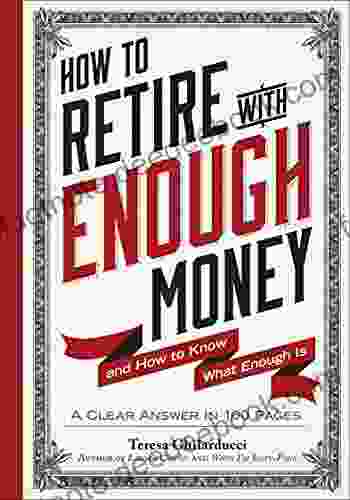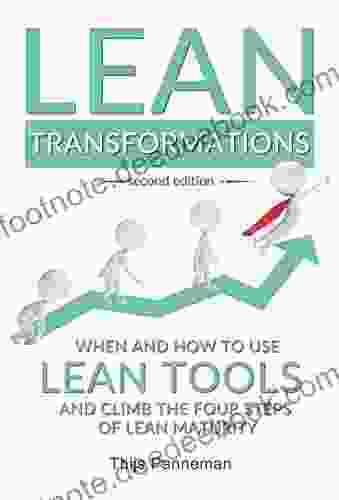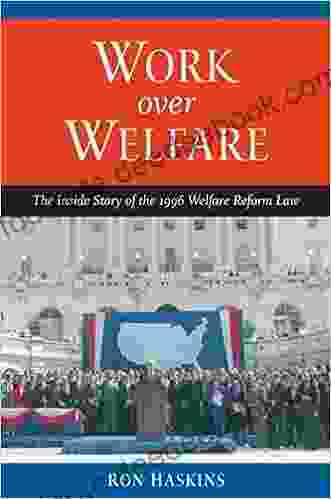The Inside Story Of The 1996 Welfare Reform Law

4.5 out of 5
| Language | : | English |
| File size | : | 6039 KB |
| Text-to-Speech | : | Enabled |
| Word Wise | : | Enabled |
| Print length | : | 450 pages |
| Screen Reader | : | Supported |
The Personal Responsibility and Work Opportunity Reconciliation Act of 1996 (PRWORA),also known as welfare reform, was a major overhaul of the United States welfare system. It was signed into law by President Bill Clinton on August 22, 1996, and took effect on July 1, 1997.
Welfare reform was a controversial piece of legislation. Supporters argued that it was necessary to reduce welfare dependency and promote self-sufficiency. Opponents argued that it would hurt poor families and children. The debate over welfare reform continues today.
The Origins Of Welfare Reform
The welfare system in the United States has its roots in the Poor Laws of England. These laws, which were first enacted in the 16th century, provided assistance to the poor and needy. In the United States, the first welfare programs were established in the 19th century. These programs were typically administered by local governments and provided food, shelter, and other basic needs to the poor.
In the 20th century, the federal government began to play a larger role in welfare. The Social Security Act of 1935 established a national system of old-age insurance, unemployment insurance, and aid to families with dependent children (AFDC). AFDC was the primary welfare program for single mothers and their children.
By the 1990s, AFDC had become a major target of criticism. Critics argued that the program was too generous and that it discouraged work. They also argued that the program was too bureaucratic and that it failed to provide adequate support to families.
The 1996 Welfare Reform Law
The Personal Responsibility and Work Opportunity Reconciliation Act of 1996 was designed to address the problems with AFDC. The law made a number of significant changes to the welfare system, including:
- Replacing AFDC with a new program called Temporary Assistance for Needy Families (TANF).
- Limiting the lifetime of TANF benefits to five years.
- Requiring TANF recipients to work in order to receive benefits.
- Providing states with more flexibility in designing their TANF programs.
The 1996 welfare reform law was a major change to the welfare system in the United States. The law has been credited with reducing welfare dependency and promoting self-sufficiency. However, the law has also been criticized for hurting poor families and children.
The Impact Of Welfare Reform
The impact of welfare reform has been mixed. The law has been credited with reducing welfare dependency and promoting self-sufficiency. However, the law has also been criticized for hurting poor families and children.
One of the most significant impacts of welfare reform has been a reduction in welfare dependency. In 1996, there were 12.6 million people receiving AFDC. By 2000, that number had fallen to 5.8 million. This decline in welfare dependency has been attributed to a number of factors, including the work requirements in the 1996 welfare reform law.
Welfare reform has also been credited with promoting self-sufficiency. In 1996, only 38% of AFDC recipients were employed. By 2000, that number had increased to 58%. This increase in employment has been attributed to the work requirements in the 1996 welfare reform law.
However, welfare reform has also been criticized for hurting poor families and children. Critics argue that the work requirements in the law make it difficult for single mothers to care for their children. They also argue that the time limits on TANF benefits force families into poverty.
The debate over welfare reform continues today. Supporters argue that the law has been a success in reducing welfare dependency and promoting self-sufficiency. Opponents argue that the law has hurt poor families and children.
The 1996 welfare reform law was a major change to the welfare system in the United States. The law has been credited with reducing welfare dependency and promoting self-sufficiency. However, the law has also been criticized for hurting poor families and children. The debate over welfare reform continues today.
4.5 out of 5
| Language | : | English |
| File size | : | 6039 KB |
| Text-to-Speech | : | Enabled |
| Word Wise | : | Enabled |
| Print length | : | 450 pages |
| Screen Reader | : | Supported |
Do you want to contribute by writing guest posts on this blog?
Please contact us and send us a resume of previous articles that you have written.
 Chapter
Chapter Story
Story Genre
Genre Library
Library Paperback
Paperback Magazine
Magazine Newspaper
Newspaper Sentence
Sentence Bookmark
Bookmark Shelf
Shelf Bibliography
Bibliography Synopsis
Synopsis Annotation
Annotation Scroll
Scroll Tome
Tome Bestseller
Bestseller Narrative
Narrative Biography
Biography Autobiography
Autobiography Reference
Reference Encyclopedia
Encyclopedia Thesaurus
Thesaurus Narrator
Narrator Resolution
Resolution Librarian
Librarian Borrowing
Borrowing Stacks
Stacks Archives
Archives Research
Research Scholarly
Scholarly Lending
Lending Reserve
Reserve Academic
Academic Reading Room
Reading Room Rare Books
Rare Books Interlibrary
Interlibrary Literacy
Literacy Dissertation
Dissertation Book Club
Book Club Theory
Theory Daniel Philpott
Daniel Philpott Jan Crawford Greenburg
Jan Crawford Greenburg Arthur J Gonzalez
Arthur J Gonzalez Joice Berth
Joice Berth Michael Fry
Michael Fry Eduardo Galeano
Eduardo Galeano Jenni Rickard
Jenni Rickard Theo Walcott
Theo Walcott Thomas Elliott Young
Thomas Elliott Young Michael Liu
Michael Liu Spencer Reece
Spencer Reece John Alexander Williams
John Alexander Williams Kay L Amour
Kay L Amour Rebecca Behrens
Rebecca Behrens Deanne Anders
Deanne Anders Collins Gcse
Collins Gcse Kirsty Manning
Kirsty Manning Richard Rawlings
Richard Rawlings Krassimir T Atanassov
Krassimir T Atanassov Antony Edmonds
Antony Edmonds
Light bulbAdvertise smarter! Our strategic ad space ensures maximum exposure. Reserve your spot today!

 Milan KunderaBoston vs. New York: The Incredible Rivalry That Built America's First Subway
Milan KunderaBoston vs. New York: The Incredible Rivalry That Built America's First Subway Cristian CoxFollow ·17.8k
Cristian CoxFollow ·17.8k Houston PowellFollow ·17.4k
Houston PowellFollow ·17.4k Elton HayesFollow ·12.1k
Elton HayesFollow ·12.1k H.G. WellsFollow ·18.3k
H.G. WellsFollow ·18.3k Gilbert CoxFollow ·11.3k
Gilbert CoxFollow ·11.3k Earl WilliamsFollow ·17.9k
Earl WilliamsFollow ·17.9k Paulo CoelhoFollow ·5.5k
Paulo CoelhoFollow ·5.5k Francisco CoxFollow ·14.8k
Francisco CoxFollow ·14.8k

 Allen Ginsberg
Allen GinsbergUnveiling the True Meaning of Enough: A Comprehensive...
: In the relentless pursuit of progress and...

 Clay Powell
Clay PowellHawker Hunter: The Jet Fighter that Shaped British...
Nestled in the halls of aviation...

 Alec Hayes
Alec HayesWhen and How to Use Lean Tools and Climb the Four Steps...
Lean is a management...

 Trevor Bell
Trevor BellVolume of Charlotte Mason Original Homeschooling: A...
Charlotte Mason's original...

 John Parker
John ParkerAscending Tristan da Cunha: A Comprehensive Guide to...
Prepare yourself for an extraordinary journey...
4.5 out of 5
| Language | : | English |
| File size | : | 6039 KB |
| Text-to-Speech | : | Enabled |
| Word Wise | : | Enabled |
| Print length | : | 450 pages |
| Screen Reader | : | Supported |












